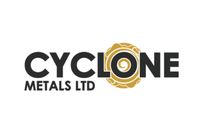WoodMac: Vale Disaster to Impact Iron Ore for Years to Come
Paul Gray and Alex Griffiths of Wood Mackenzie do not expect Vale’s iron ore production to return to 2018 levels for many years.
The effects of Vale’s (NYSE:VALE) January tailings disaster are likely to be felt by the iron ore industry for years, as seaborne supplies fall in an already tight market, and Brazilian authorities halt mining operations while they put the world’s largest iron ore producer under the microscope.
In an iron ore webinar, Wood Mackenzie analysts Paul Gray and Alex Griffiths said that a fall in Vale’s production and export numbers mean that WoodMac is upping its iron ore price forecast by 22 percent to US$82 a tonne — up from its US$67 projection at the start of the year.
“That incident is going to have long-lasting repercussions; it’s caused a massive supply shock,” said Griffiths.
“We think Vale will produce 90 million tonnes less than what we thought in January,” he continued. “Ninety million tonnes would be 5 percent of global exports if it was all headed to the export market.”
While Griffiths and Gray said there are stockpiles to draw down on and swing producers that can move to fill the supply gap, the iron ore market has already been fairly tight as Chinese demand is robust, and large-scale projects that could come online to fill the breach have all had hurdles of their own.
“Our previous view was very finely balanced anyway, but now we’re really on a knife edge with the supply-demand balance, and nobody is really going to want to be caught short of iron ore in such a finely balanced market, so that sentiment will further support prices,” said Gray.
The iron ore price will remain a moving target through 2019, he added, explaining that, as Vale was the largest iron ore producer in 2018, the dominant supplier of seaborne pellets and a major force in high-grade iron, its woes are sending ripples through the entire industry down the supply chain.
“Importantly, we don’t think this is a one year fix. It’s going to have multi-year repercussions. At the moment, our working assumption is that it’s going to take five years before Vale returns to the 2018 record-high production level.”
Can supply be made up elsewhere?
Griffiths said that other companies and other projects that could kick in to produce the 90 million tonnes of iron ore missing from the markets are not far enough along in development to make any difference in 2019, because they have infrastructure or financing issues that haven’t been resolved.
Among the projects they named were Black Iron’s (TSX:BKI,OTC Pink:BKIRF) Shymanivske project in Ukraine, Fortescue Metals’ (ASX:FMG,OTCQX:FSUGY) Iron Bridge project and Tacora Resources’ Scully mine in Canada, which was closed by Cliffs Natural Resources (NYSE:CLF) in 2014, but is now in the middle of a mine restart set for summer 2019.
These projects were already receiving plenty of attention according to Gray, who noted that Vale’s disaster has simply increased the amount of attention they are receiving as markets look for alternatives.
However, given that the WoodMac analysts predict Vale will need five years to get back to previous levels of production, those companies have time.
Analysts at FocusEconomics also spent a lot of time talking about the tailings disaster in their April 2019 Consensus Forecast, noting that the iron ore market has been under even more pressure as the world’s next two largest iron ore producers, BHP (ASX:BHP,NYSE:BHP,LSE:BHP) and Rio Tinto (ASX:RIO,NYSE:RIO,LSE:RIO), have been battered by a cyclone, leading to lower production forecasts.
“Tight supply will likely continue to keep prices high in the coming months, although the situation with Vale in Brazil is uncertain and doubts linger over the company’s sales capabilities this year,” they said.
FocusEconomics analysts’ price forecasts are not as high as WoodMac’s in the medium term, with the report saying that, while iron hit US$83.20 in Q1 2019, prices will fall over the year while the markets return to normality with other supplies coming online.
They forecast that, by Q4 2019, the price of iron will dip back down to US$65.10, with the average iron ore price forecast at US$70.70, 13 percent lower than WoodMac’s 2019 forecast.
Of panelists polled by FocusEconomics, only one came close to WoodMac’s 2019 average forecast — South Africa’s Investec (OTC Pink:ITCFY,JSE:INL) at US$81 a tonne.
Multiple other panelists had 2019 average forecasts well below WoodMac’s original 2019 forecast, including Germany’s Deutsche Bank (NYSE:DB) and Canada’s CIBC (TSX:CM) at US$62 and US-based Citigroup (NYSE:C) at US$63.
China and India
At WoodMac, Gray and Griffiths said that their view of Chinese steel demand and production is against consensus, saying that growth in steel production in China is “quite easily achievable” with major infrastructure projects leading demand and keeping prices higher despite environmental and regulatory clampdowns dampening growth.
“We’re forecasting a 2.1 percent growth in steel consumption this year and slightly under 1 percent next year, where we think demand peaks.”
Looking to India, Griffiths said that the WoodMac team is projecting that the world’s second-largest steel consumer will become a net importer of iron ore, despite currently being an exporter. However, the team said, “This 2019 supply shock is going to delay the timing and the scale of that transition.”
He explained that, while the Indian government has targets of 300 million tonnes of steel capacity by 2030, WoodMac doesn’t believe this is viable given infrastructure, investment and land rights concerns. With demand still very strong, the company believes that the subcontinent will have to look abroad to feed its growing economy.
For now, India will help fill the void left by Vale’s 90 million tonnes by continuing its role as a net exporter this year.
Don’t forget to follow us @INN_Resource for real-time updates.
Securities Disclosure: I, Scott Tibballs, hold no direct investment interest in any company mentioned in this article.
